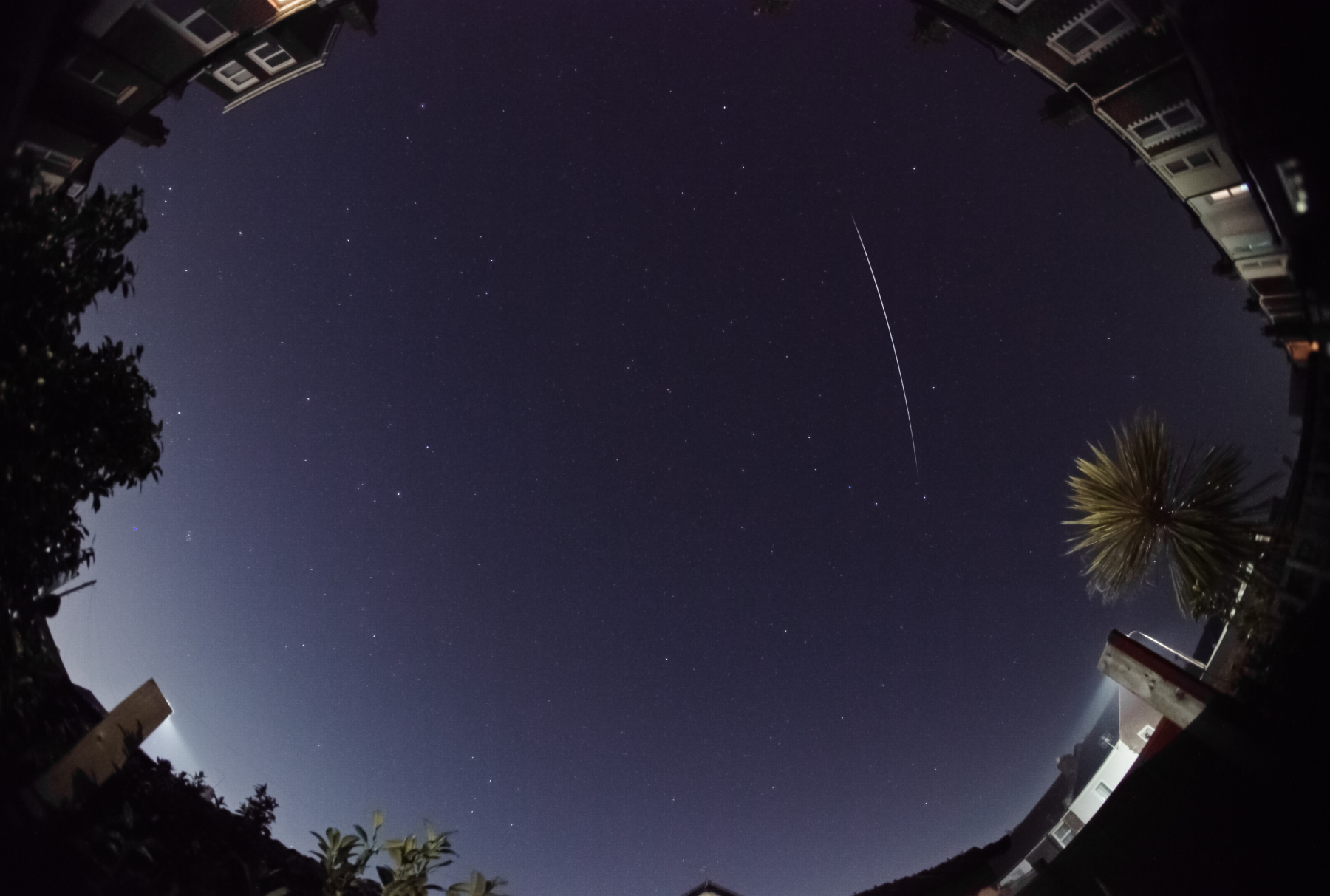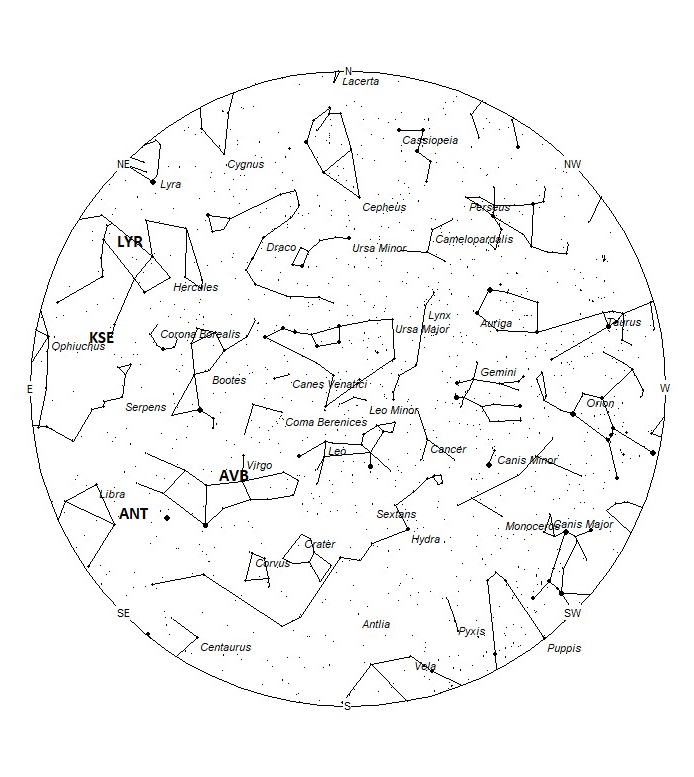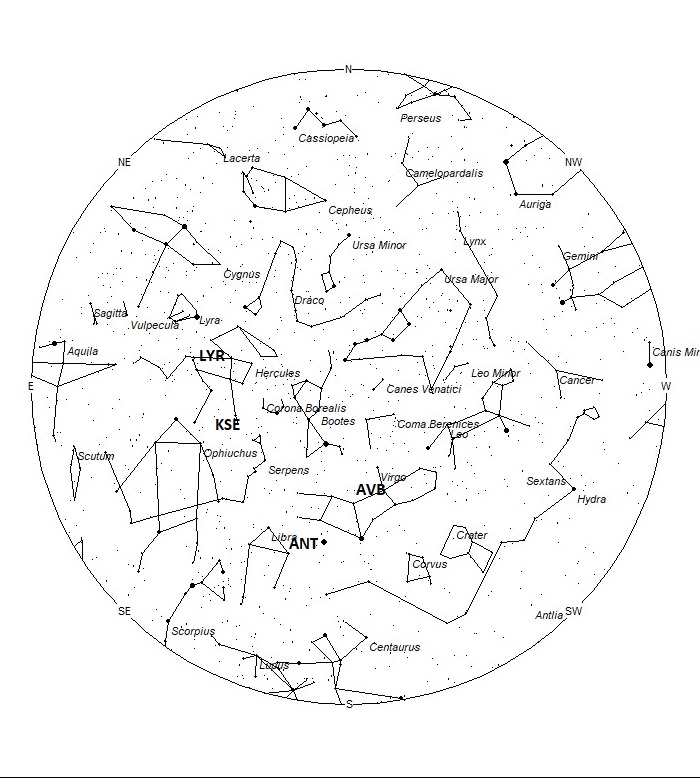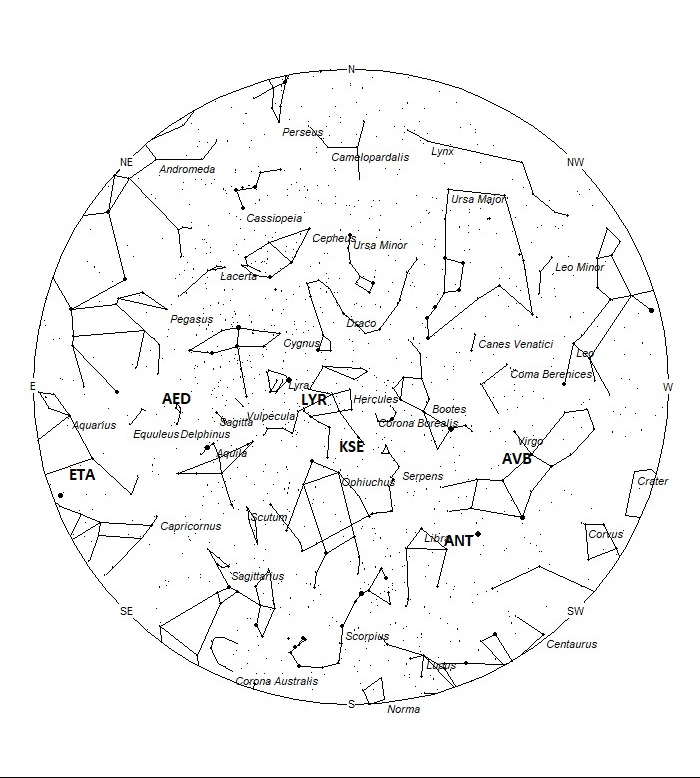 David Alger captured this bright meteor stretching all the way from the constellations of Ursa Major to Leo. His location was Portsmouth UK on 25 February 2022, at 22:40 GMT ©David Alger
David Alger captured this bright meteor stretching all the way from the constellations of Ursa Major to Leo. His location was Portsmouth UK on 25 February 2022, at 22:40 GMT ©David AlgerDuring this period, the moon reaches its full phase on Saturday April 16th. At that time the moon will lie above the horizon all night long, making meteor viewing difficult at best. As the week progresses a small window of opportunity will open up to watch meteor activity under dark skies between dusk and moon rise. Unfortunately, this time of night produces the lowest meteor activity so activity will be sparse at best. For evening observers, the estimated total hourly rates should be near 2 as seen from mid-northern latitudes (45N) and 3 as seen from tropical southern locations (25S) For morning observers, the estimated total hourly rates should be near 3 as seen from mid-northern latitudes (45N) and 5 as seen from tropical southern locations (25S). The actual rates will also depend on factors such as personal light and motion perception, local weather conditions, alertness, and experience in watching meteor activity. Rates are reduced during this period due to moonlight. Note that the hourly rates listed below are estimates as viewed from dark sky sites away from urban light sources. Observers viewing from urban areas will see less activity as only the brighter meteors will be visible from such locations.
The radiant (the area of the sky where meteors appear to shoot from) positions and rates listed below are exact for Saturday night/Sunday morning April 16/17. These positions do not change greatly day to day so the listed coordinates may be used during this entire period. Most star atlases (available at science stores and planetariums) will provide maps with grid lines of the celestial coordinates so that you may find out exactly where these positions are located in the sky. I have also included charts of the sky that display the radiant positions for evening, midnight, and morning. The center of each chart is the sky directly overhead at the appropriate hour. These charts are oriented for facing south but can be used for any direction by rotating the charts to the desired direction. A planisphere or computer planetarium program is also useful in showing the sky at any time of night on any date of the year. Activity from each radiant is best seen when it is positioned highest in the sky, either due north or south along the meridian, depending on your latitude. It must be remembered that meteor activity is rarely seen at the radiant position. Rather they shoot outwards from the radiant, so it is best to center your field of view so that the radiant lies at the edge and not the center. Viewing there will allow you to easily trace the path of each meteor back to the radiant (if it is a shower member) or in another direction if it is sporadic. Meteor activity is not seen from radiants that are located far below the horizon. The positions below are listed in a west to east manner in order of right ascension (celestial longitude). The positions listed first are located further west therefore are accessible earlier in the night while those listed further down the list rise later in the night.
These sources of meteoric activity are expected to be active this week.
Details of each source will continue next week when viewing conditions are more favorable.
| SHOWER | DATE OF MAXIMUM ACTIVITY | CELESTIAL POSITION | ENTRY VELOCITY | CULMINATION | HOURLY RATE | CLASS |
| RA (RA in Deg.) DEC | Km/Sec | Local Daylight Saving Time | North-South | |||
| Alpha Virginids (AVB) | Apr 18 | 13:08 (201) +04 | 19 | 01:00 | <1 – <1 | IV |
| Anthelions (ANT) | — | 14:40 (220) -15 | 30 | 02:00 | 1 – 2 | II |
| kappa Serpentids (KSE) | Apr 16 | 16:33 (248) +18 | 45 | 04:00 | <1 – <1 | IV |
| Lyrids (LYR) | Apr 22 | 17:45 (266) +35 | 45 | 05:00 | <1 – <1 | I |
| April epsilon Delphinids (AED) | Apr 09 | 20:56 (314) +16 | 60 | 08:00 | <1 – <1 | IV |
| eta Aquariids (ETA) | May 05 | 21:41 (325) -07 | 64 | 09:00 | <1 – <1 | I |
 American Meteor Society
American Meteor Society



I was just outside at 11:30 and saw a shooting star, it was beautiful
Around 2200 Sunday, April 17 I witnessed the brightest meteor I have ever seen. The moon was full but still low on the horizon. Just absolutely gorgeous! It sprinted horizontally across the sky, then abruptly turned vertical behind the trees still as bright as I first observed it.
I seen a fast moving green light going down towards Kissimmee FL. About 3:20 am Apr.20.2022
I was outside at around 8:45 pm on April 21,2022 when I meteor go over my house in southeast Wisconsin it slower moving than other meteors I have seen in the past. It travelled west to east and my wife was in the house and saw it looking east and then disappeared. When went directly overhead it looked like dashes ———————- . Did anyone else observe this ?
Jeff and All,
This was not a meteor, but a passage of a recent Starlink satellite launch and release. Each one of those dots were individual satellites. You can find predictions for more passes of this group or other satellites by using the Heavens Above website at: https://www.heavens-above.com/main.aspx By the way, we have received numerous reports of this event.